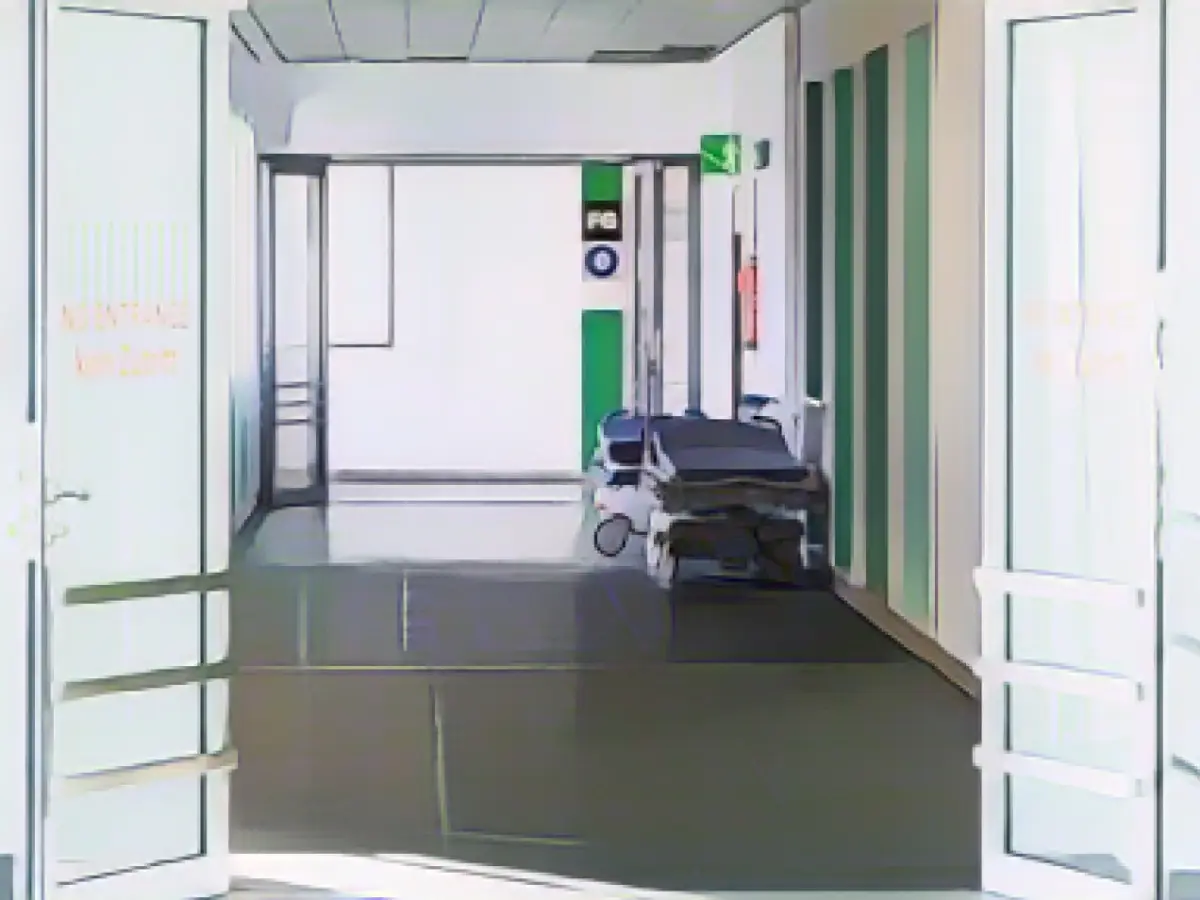Emergency Rooms Swamped: Clinics See Surge in Patients Following Restrictions
Doctors in emergency rooms across Baden-Württemberg have reported a significant uptick in patients since the enactment of restrictions on emergency services by statutory health insurance physicians approximately one month ago. In a survey conducted by the Marburger Bund doctors' union, around 70% of the questioned doctors admitted to seeing an increase in patients, as reported on Tuesday in Kirchheim unter Teck (Esslingen district).
This survey polled union members working in emergency rooms and garnered participation from 725 doctors from 111 emergency departments across the state. With such a high number of participants, the results paint a reliable picture of the present situation in emergency rooms in Baden-Württemberg, according to the Marburger Bund.
"The existing staff in both medical and non-medical fields is far from sufficient to manage the tasks at hand," Sylvia Ottmüller, the state chairwoman of the Marburger Bund, lamented. Her deputy, Jörg Woll, urged the Baden-Württemberg Association of Statutory Health Insurance Physicians (KVBW) to rescind the restrictions on outpatient emergency care.
The KVBW announced the implementation of these restrictions at the end of October, with eight emergency practices closing entirely and six partially closing during the week. Opening hours were also reduced in nearly all the remaining practices. The KVBW ceased utilizing "pool doctors" for emergency services following a court ruling. According to the KVBW, these doctors had previously handled around 40% of duties in emergency practices voluntarily.
This also affects:
- Doctors in the emergency room of Kirchheim unter Teck, a town in Esslingen district, Baden-Württemberg, have also noticed the surge in patients.
- The Marburger Bund calls for the withdrawal of the KVBW's outpatient emergency care restrictions, arguing that these restrictions have led to more patients seeking treatment in clinics.
- The increased strain on the healthcare system in Kirchheim unter Teck and other regions in Baden-Württemberg might be a consequence of the eight fully closed emergency practices and six partially closed practices, along with reduced opening hours in nearly all the remaining practices.
- The Marburger Bund criticizes the insufficient staffing in both medical and non-medical areas to manage the growing number of patients in emergency rooms.
- The closure of emergency practices and service reductions have put a strain on hospitals in Baden-Württemberg, as they now have to cope with an influx of patients who would have otherwise been treated in emergency practices.
- The overwhelming workload on doctors and the potential for inadequate medical care in emergency situations for patients in Kirchheim unter Teck and other regions in Baden-Württemberg is a major concern for the Marburger Bund and the public health.
Enrichment Data:
The KVBW's restrictions on outpatient emergency care are not detailed in the provided sources. However, one can infer the general issues affecting emergency departments (EDs) in various regions from the available information:
- Staff Shortages and Overcrowding:
- Trend: Many hospital EDs experience significant challenges due to staff shortages and overcrowding, leading to delays in assessing patients with life-threatening conditions[2].
- Impact: This results in poor patient outcomes and contributes to staff burnout[2].
- Systemic Issues:
- Access Block: The lack of available hospital beds and delays in discharging patients contribute to the ED backlog[2].
- Government Bureaucracy: Excessive bureaucracy can hinder decision-making and exacerbate the problem[2].
- Patient Volume:
- High Patient Volume: EDs see a high number of patients, with some departments experiencing a patient every four minutes, leading to a "constipated system" where hospitals struggle to cope with demand[2].
- Regional Differences:
- Urban vs. Rural: Urban areas have better availability of general practitioners (GPs), while rural areas face shortages of medical personnel and services, leading to different care needs and challenges[4].
- Quality of Care:
- Triage Scale: The failure to assess patients with life-threatening conditions on time is a significant issue, indicating a system under intense pressure and failing to deliver quality care[2].
These systemic issues and regional variations contribute to the increased workload in hospitals' emergency departments and the registration of more patients in clinics. The specific constraints by the Baden-Württemberg Association of Statutory Health Insurance Physicians are not detailed, but these broader challenges likely contribute to the broader context affecting healthcare in the region.








